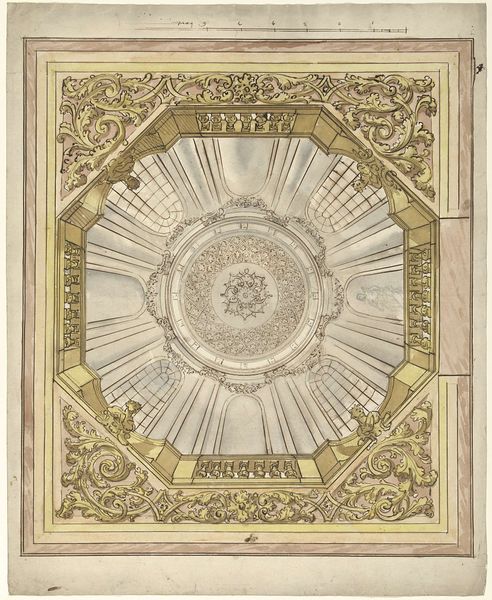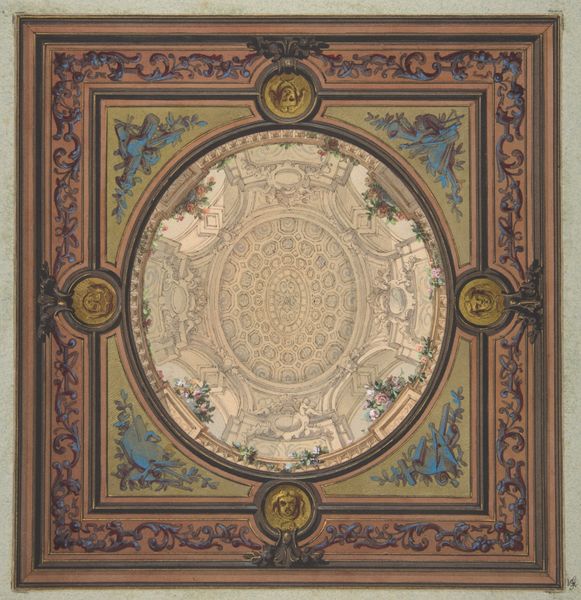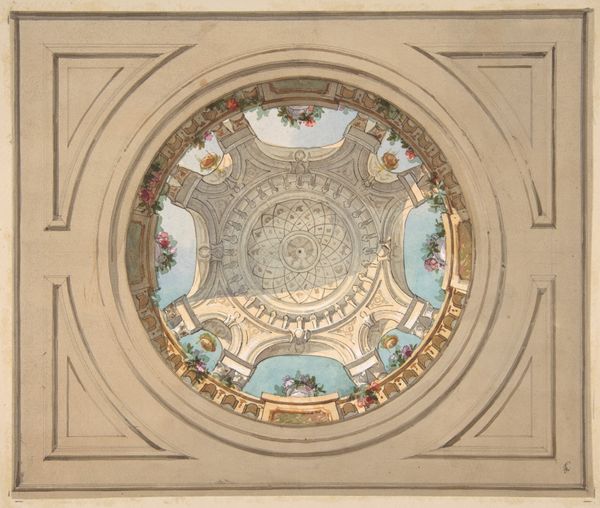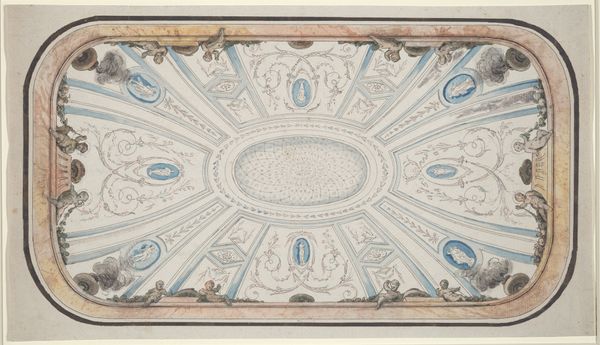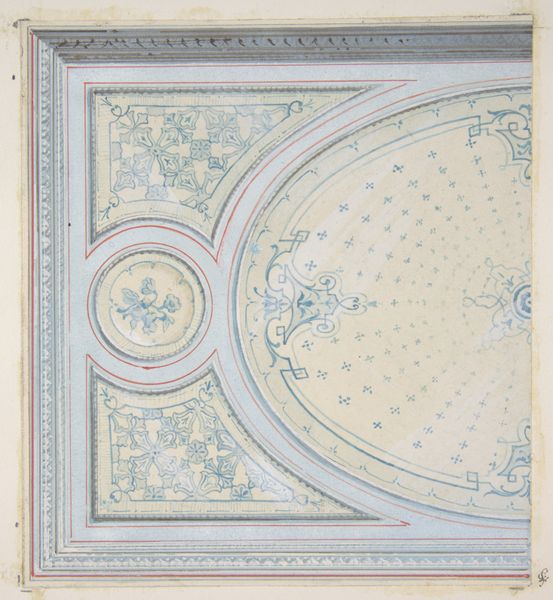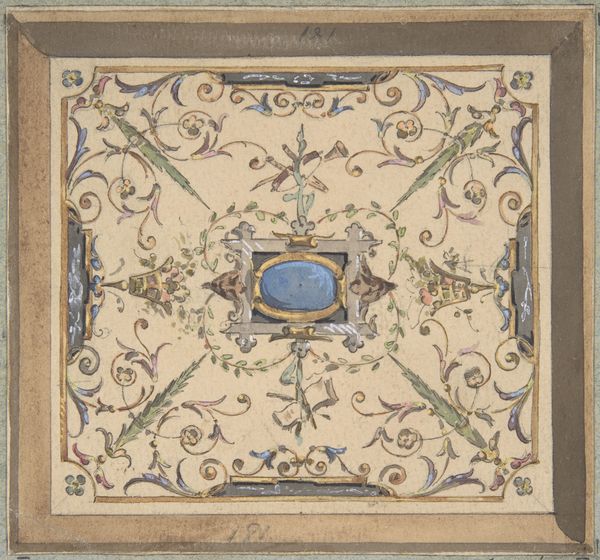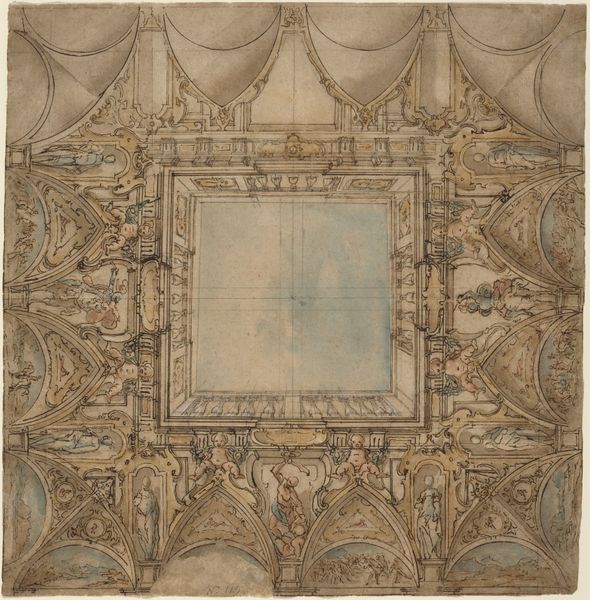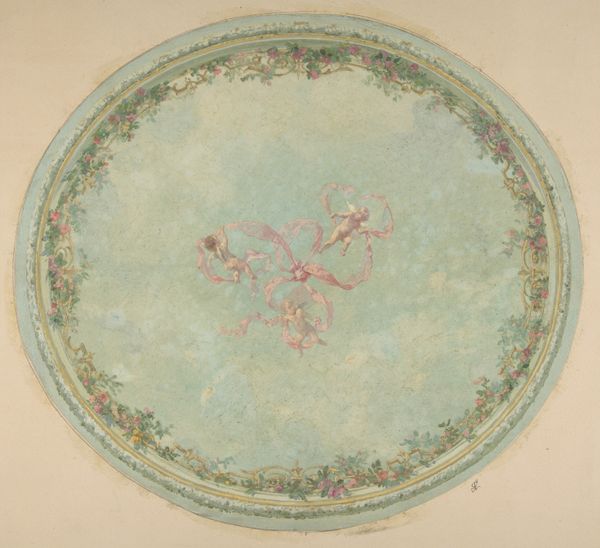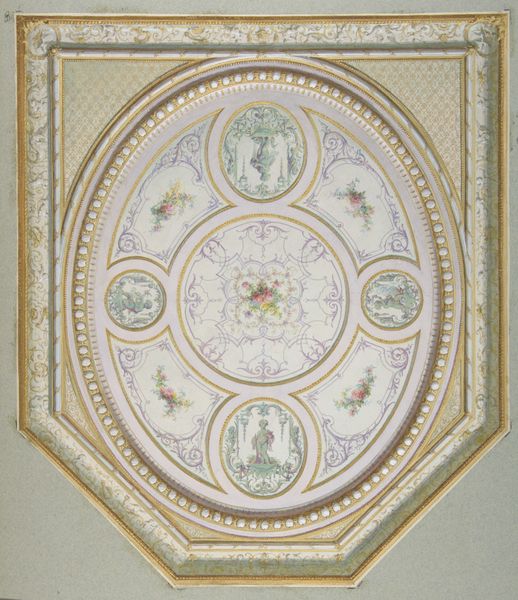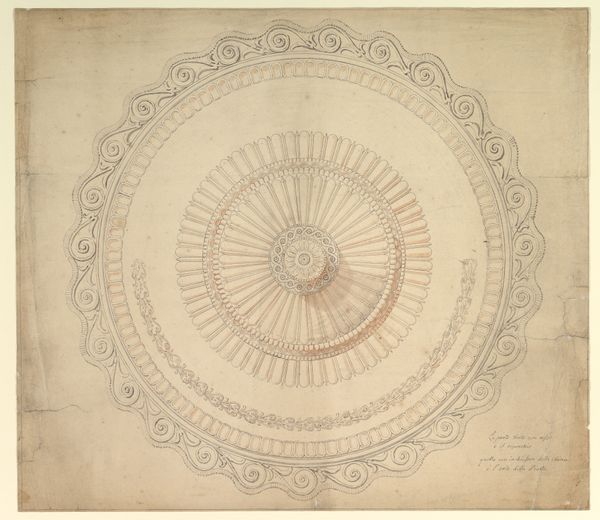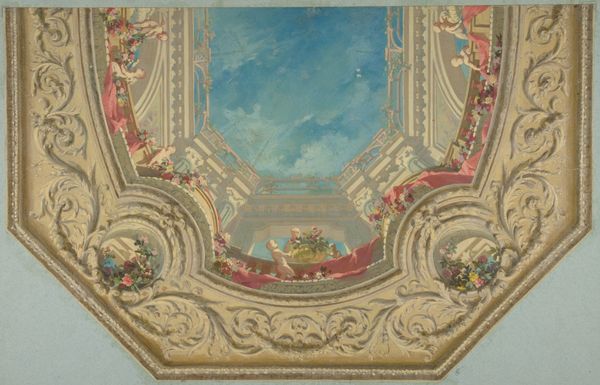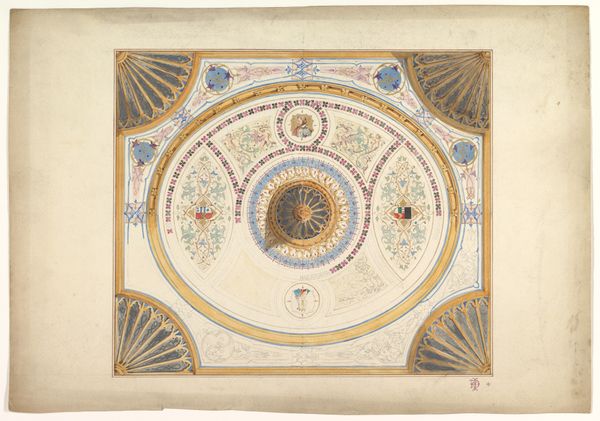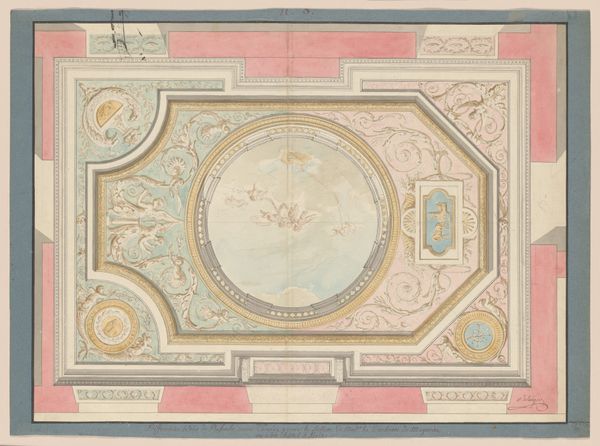
drawing, print, watercolor
#
drawing
# print
#
watercolor
#
watercolor
Dimensions: sheet: 13 1/2 x 16 1/2 in. (34.3 x 41.9 cm)
Copyright: Public Domain
Curator: This watercolour and print, a design for a boudoir ceiling at Ardgowan, dates to between 1863 and 1873 and is by J. S. Pearse. I am immediately struck by the delicacy of its ornamentation. Editor: It does give off a somewhat faded, ethereal quality. What draws you in particularly as you examine the process of making this piece? Curator: I am intrigued by how it functions as a working drawing, as it clearly delineates the components that would have been fabricated in other media, like plaster and paint. One must imagine the level of artisanal craft and collaborative labour this drawing initiated in workshops and on-site during the ceiling’s construction. Editor: Agreed. Looking at it through a historical lens, I see echoes of larger trends. It suggests a deliberate return to elaborate ornamentation after periods of more restrained Neoclassicism. We see this desire to enrich private, domestic spaces like the boudoir during the mid-19th century as a symbol of bourgeois wealth and elevated social status. Curator: Absolutely. You see how the artist used watercolor in such a controlled manner; you get a feel of meticulous detailing—evident especially near the floral emblems in the corners. It's a calculated approach that serves both decorative ambition and workshop practicality. Editor: The centralised floral rosette and radiant, tented ceiling construction suggests that this design likely functioned not merely as adornment but also as a symbolic enclosure: a space defined through decorative motifs aimed to elevate daily life. Did this aesthetic continue on into other aspects of architectural art? Curator: The style persists into the late Victorian period. Such elaborate work created employment for draughtsmen and specialized workers. It demonstrates how architectural artwork impacted labor markets and social strata involved in both high and commercial art production. Editor: True. This drawing really shows us not just aesthetics, but its wider socio-economic connections, doesn’t it? Curator: Indeed. I shall have to examine the workshop receipts to reveal a more concrete context! Editor: Well, from this encounter, I feel a deeper sense of the social dimensions behind even the most decorative designs.
Comments
No comments
Be the first to comment and join the conversation on the ultimate creative platform.
